Segovia - a delightful and historical Place

Segovia is a small historical city of approximately 55.000 inhabitants and reminds a little on Toledo but is still different. Contrary to Toledo, here, a peaceful living together of the three religions was not posible; Segovia was rather considered as a resistence against the Romans who anyway conquered Segovia around 80 B.C. After the Romans, the siege of the Arabians,Visigoths by the Castilian Kings and lastly by the Bourbons in the 18th century.
Sightseeings of Segovia
The Acueducto Romano is famous, the Roman aquaduct that belongs to the world heritage and is one of the oldest aquaducts of the Iberian Peninsula. Meanwhile it is a little affected by the air pollutions but it is still well conserved - specially considering that it is already 2000 years old; Around the aquaduct there is the Plaza de Azoguejo, a plaza that is probably always vividly visited: here, buses stop, one sees local people with fruit baskets and tourists mking pictures.
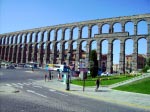
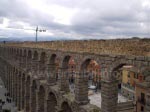
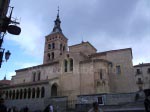
At the left of the aqueduct, the Calle Cervantes leads to the oldtown where one better gets a city map close to the Plaza Mayor if one did not arrive to Madrid by train and already has city map.
The oldtown of Segovia is clear and very nice to look at. "Romantic and in any case more beautiful than Toledo", says a friend and I am with her. It is probably a matter of taste and Toledo is in fact unique, but Segovia seems to be less touristical, a thing tht I like more.
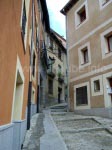
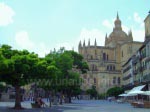
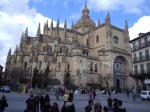
The centre of the oldtown is - as one can imagine - the Plaza Mayor, that is very small but has some nice street cafés; There are also many bars around the Plaza Mayor in which one can get refreshed. There is a cathedral in the proximity that mightfully outstands. The numerous spires slightly appear threatening but did not avoid us to get into the cathedral. The cathedral rather equals the choir stalls and the cloister apparently survived from the former building that was partly destroyed. The cathedral was built from the year 1525 up to 1593.
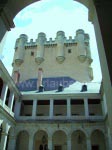
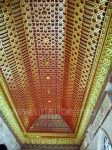
In Segovia, there are several small churches as the Roman church San Martín from the 12th century or the church San Esteban close to the Plaza Mayor. Moreover, in the historicl small city there are several museums that I will not specify now.
A further very famous building is the Alcázar - an old Castillian castle as no other. It was originated between the 11th and 13th century and was further expanded and arranged in the 15th and 16th century. From the castle, one has a wonderful view to the environment - the effort of climbing up the stairs is worthwhile in any case.
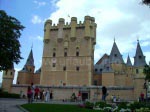
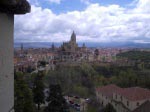
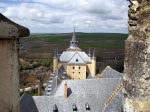
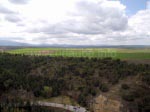
If one is on the way by car, a visit to the calvary hill should be included. It is located at the motorway N110 in direction to Ávila and is supposed to offer a spectacular view to Segovia.
More Information about Segovia
Segovia can be reached by car over the N VI and A6. The buses to there depart from the Estación Príncipe Pío (L6, L10), tube stations Atocha (L1) and Chamartín (L10). Sometimes, the railway company Renfe has some offers for the fast train, so that the 90 kilometres up to Segovia can be done within 35 minutes - by normal train it would take three times 35 minutes.
For those who want to have an extended day excursion by car I recommend a side trip over the street C601to the royal palaces of pleasure La Granja and Riofrío. Both were built in the 18th century and are full of splendour and pomp.

Back to the index Madrid
Author: Stefanie Kotulla; Copyright 2008-2008: Patrick Wagner, www.tourist-guide.biz
|